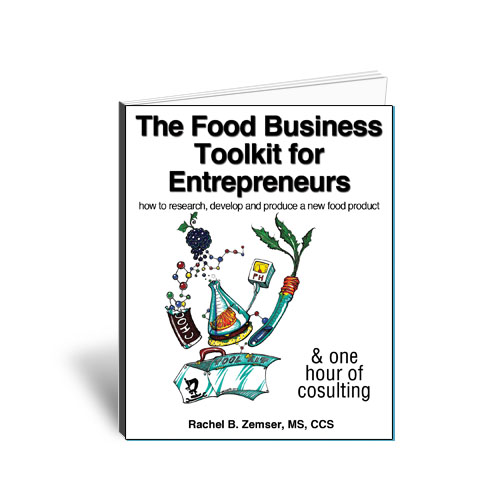Datassential Reveals Deeper Trends to Amp Up the Appeal of ‘Healthy’
MenuTrends database reveals operator trends for menu-ing healthy labels, to better engage consumers looking to refresh their eating habits

HelloFresh’s Instagram account showcases its meal kits with social media-ready pops of color, like with its Buffalo-Spiced Chickpea Bowl.
PHOTO COURTESY OF: GROCERY DELIVERY E-SERVICES USA INC (WWW.HELLOFRESH.COM)

Mexican chain Del Taco began with Beyond Meat tacos and has now released five burrito LTOs featuring Beyond Meat.


Coming out of the holidays can be stressful enough, but 2020 brought on new anxieties with the COVID-19 pandemic; in fact, Datassential found that more than one-quarter of consumers increased comfort eating after initial shelter-in-place restrictions began.
Given the rough year consumers had, the usual healthy reset of the new year could use a boost now more than ever. Datassential’s MenuTrends database reveals operator trends for menu-ing healthy labels, to better engage consumers looking to refresh their eating habits.
To amp up the appeal of “healthy,” think bold, attractive colors that make a dish visually appetizing. Or look to Mexican food to infuse well-loved flavor into plant-based items to draw in the veggie-curious. And for those seeking a health-conscious twist on treats, follow suit with operators menu-ing clean-label proteins with indulgent dishes.
Eat With Your Eyes
As the old adage goes, “You eat with your eyes, first.” Datassential finds that bright, bold colors are growing on healthy dishes, creating the initial visual appeal that helps make a dish appetizing. Turmeric, for example, has nearly tripled on menus during the last four years, adding golden color to cauliflower in veggie-forward bowls and wraps or the familiar yolk yellow to tofu scrambles, while also providing a functional anti-inflammatory boost.
With similar growth, pickled red onions provide a pop of pink on salads and sandwiches, balancing out dishes with color, as well as texture. Beets, having grown by more than half since 2016, beautify dishes with deep red or yellow hues. Retail interpretations of this application include crispy fried beet salad toppers, found at major retailers like Kroger and Meijer.
Even the signature fire engine red of sriracha is growing on healthy dishes (up 87%). Sriracha makes plant forward burgers, handhelds, and bowls more colorful (and of course, more flavorful). Sriracha-infused aioli or ketchup can amp up the look and flavor of a main dish or a healthy side, like alternative french fry varieties made from sweet potato or avocado.
Meatless Mexican
According to Datassential’s FLAVOR database, Mexican food is the second most loved global cuisine among US consumers. And, Datassential’s MenuTrends data shows that operators are increasingly taking advantage of this love by infusing Mexican elements into vegetable-forward dishes.
Cilantro lime is up 118% on healthy menus, and retailers are noticing with private label innovation like Albertson’s creamy organic cilantro lime dressing, helping consumers apply this trend to at-home salads. Another hero ingredient of Mexican cuisine, cotija (up 124%) is available in shaker form at Food 4 Less, with the V&V Supremo brand positioning it as “the parmesan style cheese of Mexico” for everything from salads to soups to cooked vegetables.
Restaurant operators have long used tacos as an approachable vehicle for plant-based offerings, drawing in consumers with this well-loved, accessible format. Tacos, already ubiquitous on menus (according to Datassential’s menu adoption trend curve) are growing on healthy menus, by nearly half since 2016. Tacos can also get a whole grain boost with corn tortillas (up 11% on restaurant menus overall) for a healthier swap.
For Americans simply wanting more vegetables in 2021, mushroom-, sweet potato-, and cauliflower-based tacos reframe familiar vegetables (and may just so happen to be vegetarian or vegan). Plant-forward Mexican dishes are not just limited to tacos, with burritos, bowls, and nachos all getting a healthy halo from either meat analogues or veggie swaps. Mexican chain Del Taco began with Beyond Meat tacos and has now released five burrito LTOs featuring Beyond Meat. LA’s Trejo’s Tacos offers unique variations like the Young Jackfruit Bowl or the Mushroom Asada Bowl, showing just how far Mexican flavors can carry the plant-based trend forward.
Clean-Label Indulgence
Chicken and waffles is growing more than ten-fold on health-aware menu items, with organic ingredients and hormone-free, antibiotic-free, and/or all-natural chicken menu claims increasingly appearing with this dish. This means consumers looking to incorporate more clean-label proteins into their diets can still treat themselves with comfort foods and indulgent brunch items.
Mac and Cheese has nearly doubled on healthy menus, driven by vegetarian claims and the addition of antibiotic-free bacon and all-natural chicken in more indulgent versions. Likewise, eggs benedict (up 60%) can be made vegetarian, but is being increasingly paired with organic eggs, all-natural meats, and even sustainable salmon.
Looking for a reprint of this article?
From high-res PDFs to custom plaques, order your copy today!








